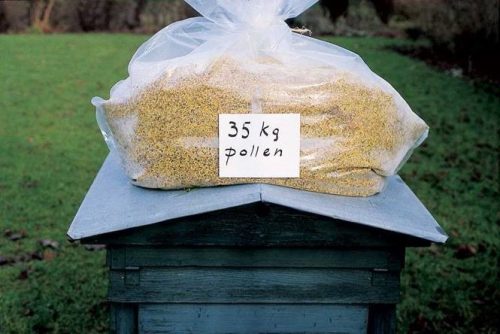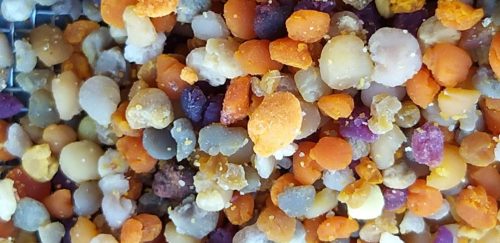Do bee colonies make pollen stores? Yes, they do!

One of our old very valued scientists in Denmark Orla Svendsen long time ago made the nice picture with a big pollen bag on the roof of a bee colony to illustrate the consumption/need of pollen as protein supply for a production honeybee colony. Literature claim different values, but he claimed a colony needs around 35 kg a year. Sjef van der Steen (personal comments) did some very nice calculations on this subject that does support this saying 30-35 kg. This is a lot. Continue reading “35 kg of pollen per year”









